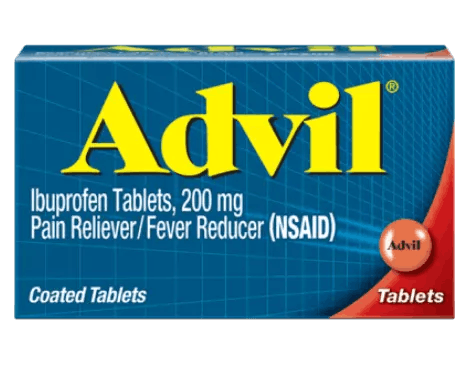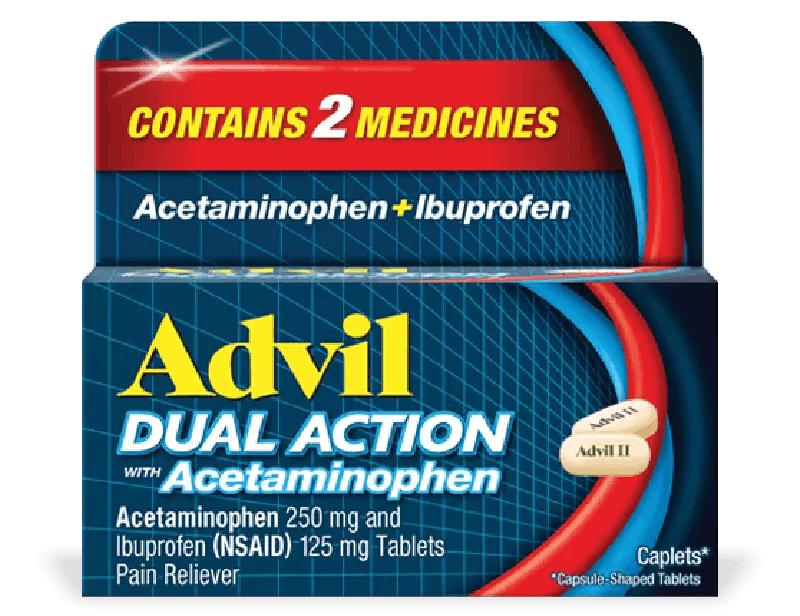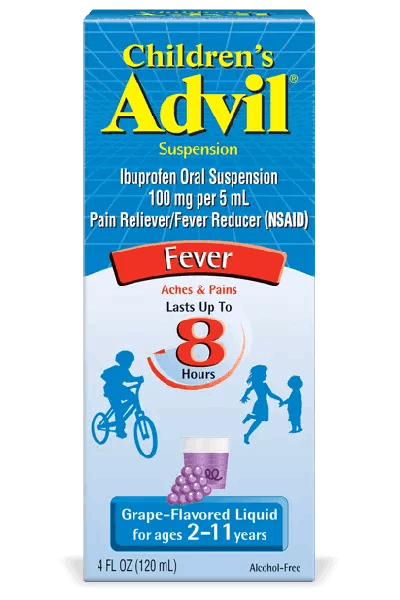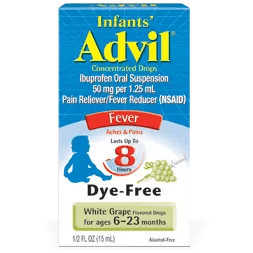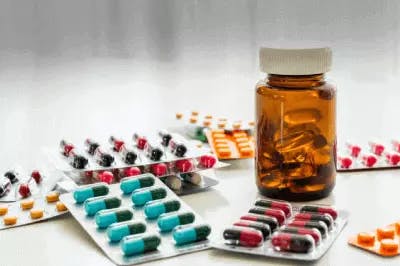Why Children’s Advil
When your child has a fever, you want effective relief you can depend on. Children’s Advil provides unsurpassed fever relief: nothing relieves fever faster* or keeps it down longer – up to 8 hours of relief in just one dose.†

Unsurpassed Fever Relief
Nothing relieves fever longer than Children’s Advil† – up to 8 hours in just one dose.
Did you know that nothing reduces a fever faster* or keeps it down longer than Children’s Advil?† Children’s Advil provides up to 8 hours of relief. You can feel confident knowing that Children’s Advil is both safe and effective when used as directed.
It’s important to remember:
Always read and keep the cartons for complete warnings and information on Infants’ Advil and Children’s Advil products.
Always use the dosing device that comes packaged with the medicine.
Adult strength medicines should not be administered to children.

How Children’s Advil Products Compare
Learn about the differences between Children’s Advil and other pain relievers/fever reducers.
One basic question that many parents may have is, what's the difference between ibuprofen, the medicine in Children's Advil, and acetaminophen, the medicine in Children's Tylenol? Here are some things parents may want to know before they head to the drugstore:
Ibuprofen and acetaminophen are the only two active ingredients used in children's over-the-counter pain relievers/fever reducers.
Ibuprofen (the active ingredient in Children's Advil) lasts longer than acetaminophen (the active ingredient in Children's Tylenol). Ibuprofen lasts up to 8 hours, while acetaminophen lasts 4 - 6 hours.
Children's Advil works faster* than Children's Tylenol.
Ibuprofen and acetaminophen are both safe when taken as directed. However, as with any medication, parents should talk to their child's pediatrician to discuss what may be best for their child.
"Nothing relieves fever longer than Children’s Advil†– up to 8 hours in just one dose."
A recent analysis of more than 40 studies showed that when treating children's pain and fever, ibuprofen (the ingredient in Children's Advil) works as good or better than acetaminophen (the ingredient in Children's Tylenol).
Sometimes, when a child's fever is high, parents alternate between ibuprofen and acetaminophen to help break the fever. However, switching back and forth may lead to confusion and dosing errors, and there are no controlled studies supporting this practice.
Safety & Usage
Keep these tips in mind when giving your child Children’s Advil.
Every medicine is different, so follow the dosing instructions for each individual product to avoid accidental overdosing.
Follow the instructions on the package and bottle.
The dose should be based on your child's weight if known; otherwise, use his or her age.
The dose lines on the cup provided with Children's Advil Suspension account for product that may remain in the cup due to the thickness of the liquid.
Measure dosing only with the device provided.
Shake the product well before dosing.
Do not give more medicine than is recommended.
Never use 2 or more medicines at the same time that have the same active ingredient.
Do not use cough and cold medicines to make a child sleepy.
If your child is taking other drugs containing prescription or nonprescription NSAIDs (aspirin, ibuprofen, naproxen, or others), consult with your doctor before giving your child any Advil products.
Adult strength medicines should not be administered to children.
Read and keep the cartons for complete warnings and information on Advil products.
As always, if you have concerns, call your doctor.
How Children’s Advil Products Work
Learn about Children’s Advil and how it works.

What it is: The active ingredient in Children’s Advil is ibuprofen. Ibuprofen is a non-steroidal, anti-inflammatory drug, also known as NSAID, which is a group of drugs that are sometimes chemically related but share therapeutic similarities such as pain-relief and fever reduction.
How it works to reduce fever: There are certain chemicals in the brain, which cause your body temperature to increase. This is what we recognize as a fever. Ibuprofen helps reduce the production of these chemicals, which lowers body temperature and in turn reduces a fever.
How it works to help pain: Ibuprofen works by blocking certain chemicals that are produced in response to injury, certain diseases and conditions that can cause aches and pains. NSAIDs block the production of these chemicals and are therefore effective at reducing pain, making your child feel more comfortable.
*Based on reducing fever below 100°F.
†Among leading OTC fever reducers/pain relievers.
Brands herein are trademarks of their respective owners.
